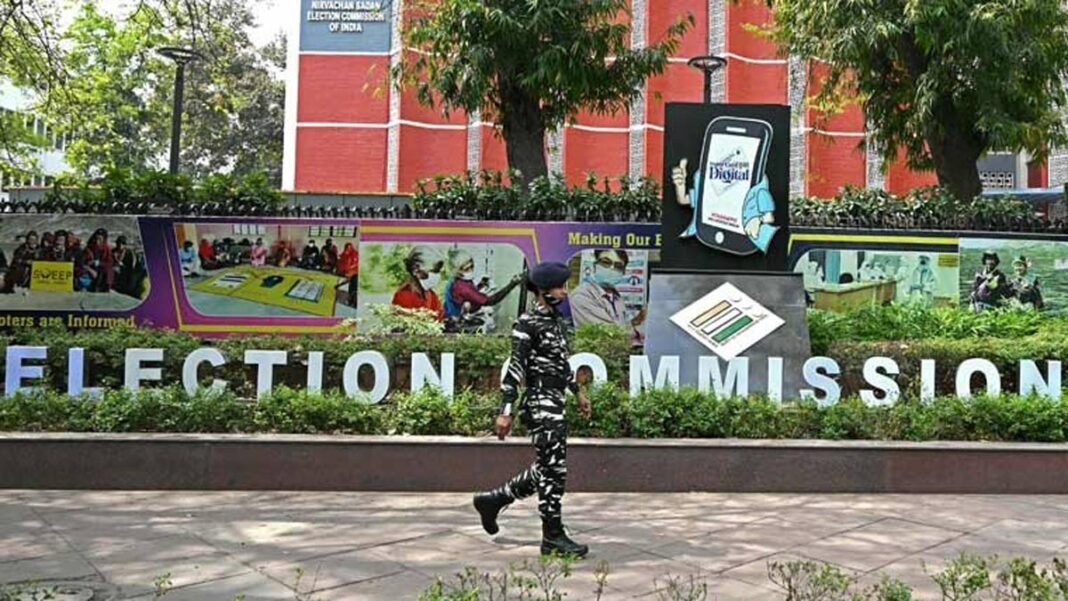New Delhi: In a swift response to Vice President Jagdeep Dhankhar’s sudden resignation, the Election Commission of India (ECI) on Wednesday initiated the process to elect a new Vice President, just two days after the post fell vacant.
Dhankhar stepped down citing health concerns, catching political circles by surprise and triggering a wave of speculation about potential successors. His resignation, which came just hours after he presided over the inaugural day of Parliament’s monsoon session, left the nation’s second-highest constitutional office unoccupied.
EC Moves Quickly to Fill Constitutional Vacancy
In a press release dated July 23, the Election Commission confirmed that it had received official notification from the Ministry of Home Affairs regarding Dhankhar’s resignation. As per Article 66 of the Constitution, the Vice President must be elected “as soon as possible” to ensure continuity in governance.
“The announcement of the Election Schedule will follow shortly,” the EC stated, adding that pre-election activities such as finalising the electoral college—comprising all Members of Parliament—and appointment of returning officers are already underway.
Though Dhankhar had nearly three years left in his term, the Constitution mandates that the next Vice President will serve a full five-year term, not just the remainder of his predecessor’s tenure.
Who Will Be the Next Vice President?
Amid this unexpected political development, focus has shifted to possible contenders for the post. Sources indicate that at least three to four names are currently being discussed in political and bureaucratic circles.
Topping the list is Bihar Chief Minister Nitish Kumar, a seasoned politician with strong credentials and cross-party relationships. At 74, Kumar may be considering a national role, especially as Bihar prepares for upcoming Assembly elections. Political analysts suggest that he could hand over the reins in Bihar to younger leadership in order to transition to a constitutional role at the Centre.
Also in contention are two Lieutenant Governors—Manoj Sinha of Jammu and Kashmir, and VK Saxena of Delhi. Both are seen as reliable administrators with experience in managing politically sensitive regions. Their names have surfaced amid discussions in the ruling party’s inner circles.
Another strong candidate is Harivansh Narayan Singh, the current Deputy Chairperson of the Rajya Sabha. With Parliament in session, Harivansh has temporarily taken over the Rajya Sabha Chairperson’s responsibilities, a role held ex officio by the Vice President.
Sudden Resignation Raises Eyebrows
Jagdeep Dhankhar’s abrupt resignation has sparked curiosity and political speculation. Although he cited health reasons, Opposition parties have questioned the timing, especially as he appeared fully active during the Parliament session just hours before submitting his resignation.
“This was unexpected. There was no sign that the Vice President was unwell or intending to quit,” a senior Opposition leader said, requesting anonymity. “We hope the government is transparent about the real reasons.”
Some political observers believe Dhankhar may have stepped down under pressure, while others suggest the move was premeditated and linked to upcoming political reshuffles.
During his tenure, Dhankhar was often at the centre of controversy. Critics accused him of showing a pro-government bias in the Upper House, with the Opposition even attempting to move an impeachment motion against him in the past.
What’s Next?
As the EC gears up for the Vice Presidential election, all eyes will be on the formal announcement of the poll schedule. The new Vice President will not only act as the Rajya Sabha Chairperson but also play a crucial constitutional role during a politically sensitive period leading up to the 2026 general elections.
Meanwhile, Dhankhar, who is entitled to government accommodation, is expected to vacate the newly-built Vice President Enclave in the coming weeks.
With no clear frontrunner yet confirmed, the coming days are likely to see intense lobbying and negotiations, particularly as political parties try to build consensus—or prepare for a contest—in electing the country’s next Vice President.








